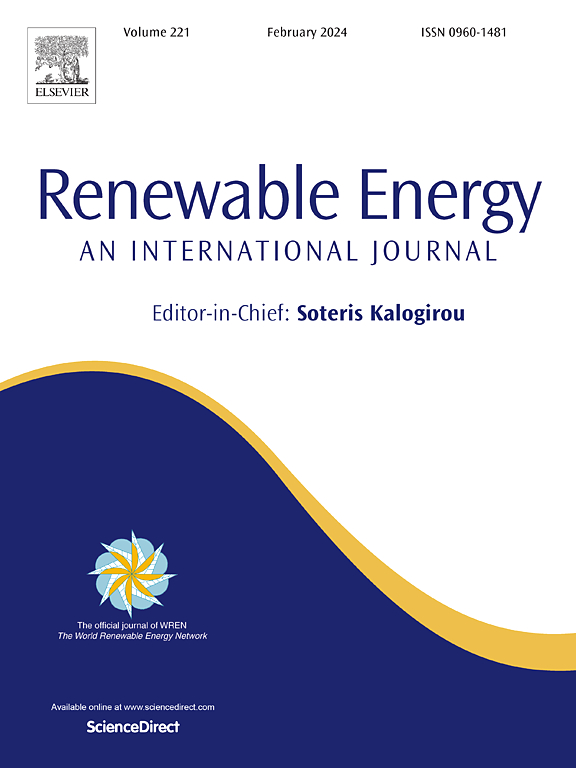水平轴风力机叶片污染的数值研究:气动和可持续影响
IF 9.1
1区 工程技术
Q1 ENERGY & FUELS
引用次数: 0
摘要
风力涡轮机叶片的污染,特别是在吸力侧,会显著降低空气动力学性能并降低输出功率,因此了解其对高效风力发电的影响至关重要。本研究探讨了不同污染程度对水平轴风力发电机叶片气动性能的影响,并量化了由此产生的环境和经济影响。为了分析这些影响,在清洁和污染叶片条件下进行了两种雷诺数下的计算流体动力学模拟。接下来是叶片元素动量分析,以评估年能源产量。结果表明,污染增加了阻力,降低了升力,并使过渡开始向上游偏移,从而降低了气动效率。叶片元素动量分析证实,污染程度越高(高达10%),每年的能源产量就会减少,导致碳排放增加,相对于最低污染程度,经济损失超过7%。本文章由计算机程序翻译,如有差异,请以英文原文为准。
A numerical study of horizonal axis wind turbine blade Contamination: Aerodynamic and sustainable impacts
Wind turbine blade contamination, particularly on the suction side, can significantly degrade aerodynamic performance and reduce output power, making it essential to understand its effects for efficient wind energy generation. This study investigates the influence of varying contamination extents on the aerodynamic performance of horizontal-axis wind turbine blades and quantifies the resulting environmental and economic impacts. To analyse these effects, computational fluid dynamics simulations were conducted at two Reynolds numbers under both clean and contaminated blade conditions. This was followed by a blade element momentum analysis to assess annual energy production. The results show that contamination increases drag, reduces lift, and shifts the transition onset upstream, thereby decreasing aerodynamic efficiency. The blade element momentum analysis confirms that greater contamination extent up to 10 % reduces annual energy production, contributing to higher carbon emissions and economic losses exceeding 7 % relative to the minimum contamination extent.
求助全文
通过发布文献求助,成功后即可免费获取论文全文。
去求助
来源期刊

Renewable Energy
工程技术-能源与燃料
CiteScore
18.40
自引率
9.20%
发文量
1955
审稿时长
6.6 months
期刊介绍:
Renewable Energy journal is dedicated to advancing knowledge and disseminating insights on various topics and technologies within renewable energy systems and components. Our mission is to support researchers, engineers, economists, manufacturers, NGOs, associations, and societies in staying updated on new developments in their respective fields and applying alternative energy solutions to current practices.
As an international, multidisciplinary journal in renewable energy engineering and research, we strive to be a premier peer-reviewed platform and a trusted source of original research and reviews in the field of renewable energy. Join us in our endeavor to drive innovation and progress in sustainable energy solutions.
 求助内容:
求助内容: 应助结果提醒方式:
应助结果提醒方式:


